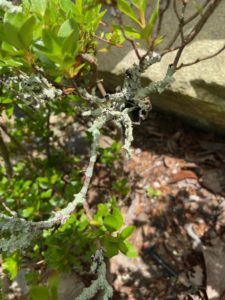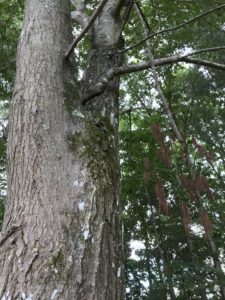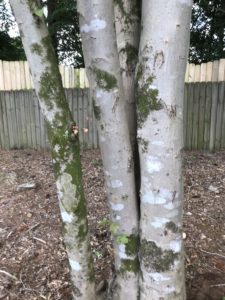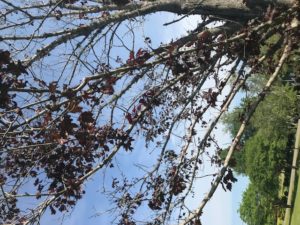Pest Alert – Lichens Are Harmless to Trees
go.ncsu.edu/readext?708132
en Español / em Português
El inglés es el idioma de control de esta página. En la medida en que haya algún conflicto entre la traducción al inglés y la traducción, el inglés prevalece.
Al hacer clic en el enlace de traducción se activa un servicio de traducción gratuito para convertir la página al español. Al igual que con cualquier traducción por Internet, la conversión no es sensible al contexto y puede que no traduzca el texto en su significado original. NC State Extension no garantiza la exactitud del texto traducido. Por favor, tenga en cuenta que algunas aplicaciones y/o servicios pueden no funcionar como se espera cuando se traducen.
Português
Inglês é o idioma de controle desta página. Na medida que haja algum conflito entre o texto original em Inglês e a tradução, o Inglês prevalece.
Ao clicar no link de tradução, um serviço gratuito de tradução será ativado para converter a página para o Português. Como em qualquer tradução pela internet, a conversão não é sensivel ao contexto e pode não ocorrer a tradução para o significado orginal. O serviço de Extensão da Carolina do Norte (NC State Extension) não garante a exatidão do texto traduzido. Por favor, observe que algumas funções ou serviços podem não funcionar como esperado após a tradução.
English
English is the controlling language of this page. To the extent there is any conflict between the English text and the translation, English controls.
Clicking on the translation link activates a free translation service to convert the page to Spanish. As with any Internet translation, the conversion is not context-sensitive and may not translate the text to its original meaning. NC State Extension does not guarantee the accuracy of the translated text. Please note that some applications and/or services may not function as expected when translated.
Collapse ▲Gray crusty organisms growing on trees and shrubs can be a concern for home gardeners. Luckily, lichens are harmless to plants. A lichen is not a single organism, but the result of a partnership between a fungus and an alga (or cyanobacteria). The lichen fungus provides its partner a home and gains nutrients in return.
Lichens are harmless to plants. Lichens grow on objects that are not moving such as rocks. They will also grow on plants that are not growing. Growing plants will shed bark as the stems get larger in diameter, much like we shed skin cells constantly. If we did not shed skin we might have lichens growing on us too! Trees and shrubs that are not growing are a sign of unhealthy plants.
How do you get rid of lichens? I suggest concerned gardeners fertilize their plants with a low rate of their preferred fertilizer 2 or 3 times per growing season. Or, one application of Osmocote slow release fertilizer would be a good choice to get plants growing. Fertilizer will get the plants growing, their stems will increase in diameter, and the lichens will eventually fall off as bark is shed.
How does pruning affect lichen occurrence? A plant will put its energy into growing new growth in the spring. This is because new leaves are more photosynthetically productive, making more food than older leaves. If you remove this new growth year after year by pruning or shearing in the early summer, then the plant never has the energy to grow wood in the older parts of the plants, thus the lichens. Again, lichens are a sign of weakness in the plant, not a cause. Lichens are harmless to plants. Fertilizer will help your plant grow.








